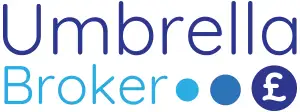Making Tax Digital
HMRC’s Making Tax Digital for VAT rolls out on 1st April 2019. This marks the end of paper record keeping for millions of businesses, self-employed workers and contractors in the UK.
The mandatory scheme has been designed to digitize and improve the UK tax system. Making it more efficient, effective and easier for taxpayers. Yet a recent survey found that 1 in 5 small businesses still don’t understand what Making Tax Digital is and how it will affect them.
So how will it work and in what ways will it impact contractors? Umbrella Broker are here to answer all your questions on Making Tax Digital so contractors are left prepared, not left behind.
First things first – what is Making Tax Digital for VAT?
The scheme is aimed at making filing tax simpler for UK businesses. VAT-registered businesses with a taxable turnover above the VAT threshold of £85,000 will be required to use a new online service and compatible software to keep their records and submit their VAT returns digitally. This means waving goodbye to paper records and files full of old receipts.
The scheme is designed to help businesses and self-employed workers get their tax right. To avoid mistakes through improved accuracy that digital records provide. According to Government figures, latest tax gap figures highlight that avoidable mistakes cost the Exchequer over £9 billion per year.
VAT rules themselves are going to remain exactly the same. What is changing is how you are required to submit your VAT records.
Making Tax Digital for VAT puts an end to annual tax returns. Instead, contractors will be required to send in information to HMRC digitally. At least 4 times per year using a digital tax account.
This doesn’t mean you will be filing 4 tax returns ever year. It means you will be providing more regular financial updates online.
Making Tax Digital for VAT is the first part of the scheme to be rolled out on the 1st April 2019. The initiative will later be extended to other tax processes. Including income tax and corporation tax from April 2020.
Great, so will I be affected?
The scheme is mandatory for the majority of VAT-registered business with a turnover above the threshold of £85k.
If you are below the £85k threshold you won’t be affected immediately. It is worth noting that you can take this time as an opportunity to switch to the online system. Good preparation for all tax going digital.
OK, but there are exceptions?
A small minority of VAT-registered businesses with more complicated requirements will be exempt from the scheme.
For this group, the scheme will be delayed until 1st October 2019. Giving enough time to test out the pilot before they are required to join.
Those exempt from enrolling on the scheme on 1st April include:
- Trusts
- ‘Not for profit’ organisations that aren’t set up as a company
- VAT divisions
- VAT groups
- Public sector entities that are required to provide additional information on their VAT returns including NHS trusts and Government departments
- Local authorities
- Public corporations
- Traders based overseas
- Those required to make payments on account
- Annual accounting scheme users
What does Making Tax Digital mean for me as a contractor?
The initiative aims to make filing VAT returns more effective, efficient and easier for contractors that run a limited company that is VAT-registered:
- Effective: tax recording will become more accurate with fewer opportunities for errors, miscalculations and fraudulent activity.
- Efficient: filing will become a faster and more automated process for businesses, accountants and HMRC, helping to save everybody’s time.
- Easier: the scheme will make recording and filing tax returns online a lot easier with the use of the right software.
HMRC has stated that the scheme will allow them to provide businesses and self-employed professionals with a tax position that is ‘as close to real-time as possible.’
This will mean that contractors don’t have to wait until the end of the tax year to find out how much tax they owe. They will instead be able to keep a much closer eye on their tax obligations throughout the year. At any one time you will be able to use compatible software to check how much your tax bill will be and save and budget accordingly.
How do I know what software is compatible for Making Tax Digital?
Making Tax Digital for VAT will require contractors to use compatible software. This will most likely mean that your trusty spreadsheet will no longer make the cut.
So what software is compatible? – FreeAgent!
FreeAgent have been working closely with HMRC for the past few months, participating in the scheme’s pilot programme. They can now proudly say that their software is on HMRC’s list of compatible suppliers for Making Tax Digital for VAT. In fact, they’ve already made their first successful submission.
If you’ve not yet taken the leap into 21st century accounting then remember, April 1st is the deadline. It’s always better to plan ahead in plenty of time and familiarise yourself with going paperless, scrapping those spreadsheets in replacement for software instead.
For help with using FreeAgent there are plenty of comprehensive guides including how to use FreeAgent in under 10 minutes a day plus handy FreeAgent video guides.
Next Steps – let Umbrella Broker help you on your journey to Making Tax Digital for VAT
Umbrella Broker are here to help contractors every step of the way. From helping get to grips with Making Tax Digital for VAT, to ensuring accounting under the scheme is super easy with the likes of FreeAgent. To find out more about how we can help, phone 0161 464 8708 or email customerservice@umbrellabroker.com

